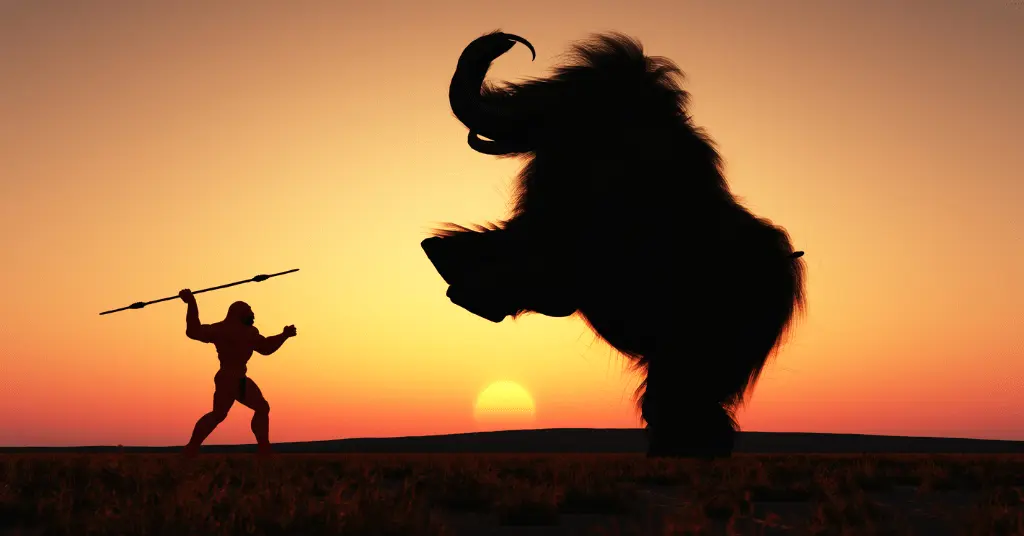AI Answer Evaluation Platform Live Now. Try Free Answer Evaluation Now
Survival of the Fittest
The concept of “survival of the fittest” is commonly associated with the theory of evolution and natural selection. The phrase was first coined by the British philosopher Herbert Spencer in his 1864 book, “Principles of Biology” (Spencer, 1864). However, it was the British naturalist Charles Darwin who popularized the phrase in his 1859 book, “On the Origin of Species by Means of Natural Selection” (Darwin, 1859).

The idea behind “survival of the fittest” is that organisms with traits that are advantageous for survival and reproduction are more likely to pass on those traits to their offspring, while those with less advantageous traits are less likely to survive and reproduce. This process leads to the evolution of species over time.
While the phrase is often used in popular discourse, it is important to note that it is not a scientific principle in and of itself, but rather a popularization of the concept of natural selection. Natural selection is a well-established scientific principle that has been extensively studied and supported by evidence (Darwin, 1859).
Its Applications
The concept of “survival of the fittest” has been used in a variety of fields beyond biology and evolutionary theory. Here are a few examples:
Economics: The concept of “survival of the fittest” has been applied to economic systems, with some arguing that capitalism is a natural extension of this principle. For example, in his 1851 book “Social Statics,” Herbert Spencer wrote that “the laws of competition… ensure that the strongest, the most intelligent, and the most capable rise to the top” (Spencer, 1851).
Sports: The phrase “survival of the fittest” is often used in the context of sports, with athletes competing to see who is the strongest, fastest, or most skilled. This use of the phrase is not necessarily related to evolution or natural selection, but rather to the idea of competition and excellence.
Technology: The concept of “survival of the fittest” has been applied to the tech industry, with some arguing that companies that are able to adapt to changing market conditions are more likely to survive and thrive. This idea is sometimes referred to as “technological natural selection” (Timmers, 1998).
“Survival of the fittest” in Natural Selection
The concept of “survival of the fittest” is a central component of the theory of natural selection, which explains how evolution occurs. Natural selection is the process by which features that are beneficial for survival and reproduction are more likely to be present in organisms. This process eventually results in the evolution of species. Over time, this process leads to the evolution of species.
Natural selection has been extensively studied and supported by evidence. For example, in his famous study of finches on the Galapagos Islands, Charles Darwin observed that the finches with the beaks that were best suited to their environment were the ones that survived and reproduced (Darwin, 1859). This process of natural selection led to the evolution of different species of finches on the different islands of the archipelago.
Another example of natural selection in action is the peppered moth in England. Prior to the Industrial Revolution, the majority of peppered moths had light-colored wings that blended in with the lichen on trees. However, as pollution from factories darkened the trees, the darker-colored moths became more visible to predators and the lighter-colored moths became more likely to survive and reproduce. Over time, the population shifted towards darker-colored moths (Kettlewell, 1958).
Natural selection and Adaptation
Natural selection and adaptation are two concepts that are closely related to each other. Natural selection is the process by which organisms with traits that are advantageous for survival and reproduction are more likely to pass on those traits to their offspring, while those with less advantageous traits are less likely to survive and reproduce. Adaptation, on the other hand, is the process by which organisms develop traits that are better suited to their environment over time.
Adaptation occurs through natural selection. Over time, organisms with advantageous traits will be more likely to survive and reproduce, passing on those traits to their offspring. This process can lead to the development of new traits that are better suited to the environment. For example, if a population of birds lives in an area with a lot of insects that are hard to catch, over time the birds with longer beaks that are better suited to catching those insects will be more likely to survive and reproduce. This will lead to a population of birds with longer beaks that are better adapted to their environment.
One example of adaptation through natural selection is the evolution of antibiotic resistance in bacteria. When bacteria are exposed to antibiotics, those that have mutations that make them resistant to the antibiotic are more likely to survive and reproduce, passing on those resistant traits to their offspring. Over time, this can lead to the evolution of bacterial strains that are resistant to multiple antibiotics (Levy and Marshall, 2004).
Scholarly attention towards the Concept
The notion of “survival of the fittest” has been important to the theory of evolution and has been the target of much research and dispute during the last century. Notable specialists from various fields of study have contributed to our knowledge of this principle and its repercussions for the natural world and human civilization.
Charles Darwin’s idea of natural selection is arguably the most well-known and fundamental theory related to “survival of the fittest.” Darwin hypothesized that animals with advantageous features that allow them to live and reproduce are more likely to pass on those traits to their offspring, resulting in evolutionary change through time.
Other scholars, such as Herbert Spencer and Alfred Russel Wallace, generalized the concepts of natural selection to human societies, leading to the formation of Social Darwinism. This concept fought for laissez-faire capitalism and argued that people and communities may be better through competition and the survival of the fittest.
In the 20th century, academics like Ronald Fisher and Richard Dawkins extensively investigated the mathematical and genetic basis of natural selection, whereas Stephen Jay Gould challenged biological determinism and underlined the importance of chance and historical contingency in evolution.
These scientists and many more have made major contributions to our knowledge of “survival of the fittest” and its ramifications for the natural world and human society. Through their efforts, we continue to increase our grasp of the basic principles of evolution and the complexity of the natural world.
| Scholar | Theory |
|---|---|
| Charles Darwin | Theory of natural selection, which posits that organisms with advantageous traits are more likely to survive and reproduce. |
| Herbert Spencer | Social Darwinism, which applied the principles of natural selection to human societies, arguing for laissez-faire capitalism. |
| Alfred Russel Wallace | Co-discoverer of the theory of natural selection, independently of Darwin. |
| Thomas Huxley | Defender of the theory of natural selection, and advocate of scientific skepticism and agnosticism. |
| Ronald Fisher | Developed the mathematical basis of natural selection and helped to merge genetics with evolution. |
| Richard Dawkins | Proposed the idea of the “selfish gene,” arguing that genes are the units of selection in evolution. |
| Stephen Jay Gould | Critic of biological determinism and supporter of the idea that chance events and historical contingency play a major role in evolution. |
In conclusion, the concept of “survival of the fittest” has been a central idea in the theory of evolution since it was first proposed by Charles Darwin. Over time, scholars from different fields have contributed to our understanding of this concept and its implications for the natural world and human societies.
Herbert Spencer and Alfred Russel Wallace applied the principles of natural selection to human societies, leading to the development of Social Darwinism, while Ronald Fisher and Richard Dawkins developed the mathematical and genetic underpinnings of natural selection. Stephen Jay Gould critiqued biological determinism and emphasized the role of chance and historical contingency in evolution.
Despite the controversies that have arisen around the concept of “survival of the fittest,” it remains a fundamental concept in the study of evolution and has contributed to our understanding of the complex mechanisms that shape the natural world. As scientific research continues to advance, we can expect new insights into the concept of “survival of the fittest” and its role in shaping the world we live in.
FAQs about Survival of the Fittest
Endnotes
- Darwin, C. (1859). On the Origin of Species by Means of Natural Selection. London: John Murray.
- Kettlewell, H. B. D. (1958). A survey of the frequencies of Biston betularia (L.) (Lepidoptera) and its melanic forms in Great Britain. Heredity, 12(1), 51-72.
- Levy, S. B., & Marshall, B. (2004). Antibacterial resistance worldwide: causes, challenges and responses. Nature medicine, 10(12s), S122-S129.
- Spencer, H. (1851). Social Statics: The Conditions Essential to Human Happiness Specified, and the First of Them Developed. London: John Chapman.
- Spencer, H. (1864). Principles of Biology. London: Williams and Norgate.
- Timmers, P. (1998). Business Models for Electronic Markets. Journal on Electronic Markets, 8(2), 3-8.




